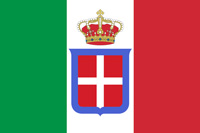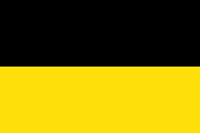World War I (1914-1918)

Fourth Battle of the Isonzo
The Fourth Battle of the Isonzo was fought between the armies of Kingdom of Italy and those of Austria-Hungary on the Italian Front in World War I, between November 10 and December 2, 1915.
In contrast to the other three Battles of the Isonzo (June, July and October), this offensive lasted a short amount of time, and is sometimes considered a continuation of the previous offensive.
Most of the clash concentrated in the direction of Gorizia and on the Kras Plateau, though the push was distributed on the whole Isonzo front. The 2nd Italian The Kingdom of Italy was a state that existed from 1861, when Victor Emmanuel II of Sardinia was proclaimed King of Italy, until 1946. The state resulted from a decades-long process, the Risorgimento, of consolidating the different states of the Italian Peninsula into a single state. That process was influenced by the Savoy-led Kingdom of Sardinia, which can be considered Italy's legal predecessor state. Army, aiming to Gorizia, was able to capture the hilly area around Oslavia and San Floriano del Collio overlooking the Soča (Isonzo) and the town of Gorizia. The Third Army, covering the rest of the front up to the sea, launched a series of large and bloody attacks which brought no significative gain.
The Kingdom of Italy was a state that existed from 1861, when Victor Emmanuel II of Sardinia was proclaimed King of Italy, until 1946. The state resulted from a decades-long process, the Risorgimento, of consolidating the different states of the Italian Peninsula into a single state. That process was influenced by the Savoy-led Kingdom of Sardinia, which can be considered Italy's legal predecessor state. Army, aiming to Gorizia, was able to capture the hilly area around Oslavia and San Floriano del Collio overlooking the Soča (Isonzo) and the town of Gorizia. The Third Army, covering the rest of the front up to the sea, launched a series of large and bloody attacks which brought no significative gain.
Mount Sei Busi, already the scene of bitter fighting, was attacked five times by the Italian forces, always in vain.
The intensity of the fighting increased until the end of November, when the bridgehead of Tolmin (Italian: Tolmino) was heavily bombed by both sides and the casualty ratio per day reached its apex. In the first fifteen days of December, however, the fighting was reduced to small scale skirmishes as opposed to the massive frontal assaults that characterized the previous phases of the battle.
An unsigned truce arrived together with the first great cold in the mountains of the Kras, and operations were arrested due to lack of supplying.
The Austro-Hungarian Austria-Hungary, often referred to as the Austro-Hungarian Empire, the Dual Monarchy, or Austria, was a constitutional monarchy and great power in Central Europe between 1867 and 1918. Austria-Hungary was one of the Central Powers in World War I, which began with an Austro-Hungarian war declaration on the Kingdom of Serbia on 28 July 1914. High Command, worried by the huge losses, notwithstanding the 12 additional divisions sent to the front, for the first time requested help from the German Empire
Austria-Hungary, often referred to as the Austro-Hungarian Empire, the Dual Monarchy, or Austria, was a constitutional monarchy and great power in Central Europe between 1867 and 1918. Austria-Hungary was one of the Central Powers in World War I, which began with an Austro-Hungarian war declaration on the Kingdom of Serbia on 28 July 1914. High Command, worried by the huge losses, notwithstanding the 12 additional divisions sent to the front, for the first time requested help from the German Empire The German Empire, also referred to as Imperial Germany, the Second Reich, as well as simply Germany, was the period of the German Reich from the unification of Germany in 1871 until the November Revolution in 1918, when the German Reich changed its form of government from a monarchy to a republic. During its 47 years of existence, the German Empire became the industrial, technological, and scientific giant of Europe., which was not formally in the war against Italy yet. This reason led the Germans to intervene on the Italian front but only starting from the Eleventh Battle of the Isonzo.
The German Empire, also referred to as Imperial Germany, the Second Reich, as well as simply Germany, was the period of the German Reich from the unification of Germany in 1871 until the November Revolution in 1918, when the German Reich changed its form of government from a monarchy to a republic. During its 47 years of existence, the German Empire became the industrial, technological, and scientific giant of Europe., which was not formally in the war against Italy yet. This reason led the Germans to intervene on the Italian front but only starting from the Eleventh Battle of the Isonzo.
HISTORY

RESOURCES
This article uses material from the Wikipedia articles "World War", "World War I", and "Fourth Battle of the Isonzo", which is released under the Creative Commons Attribution-Share-Alike License 3.0.
© Stories Preschool. All Rights Reserved.










